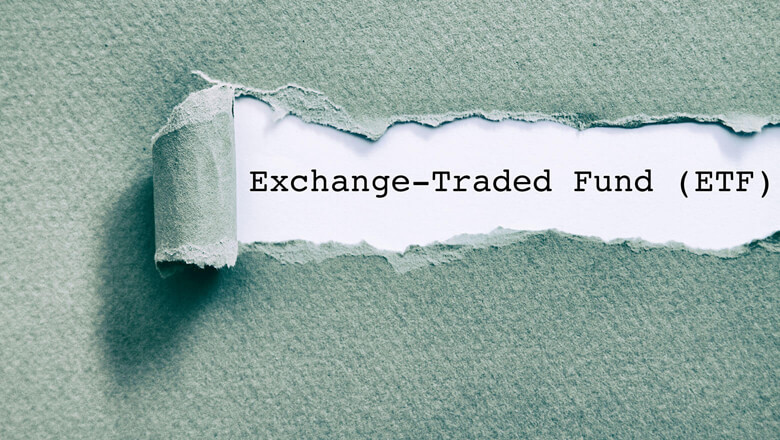SoFi Blog
Tips and news—
for your financial moves.
Self-Employed? Here’s Why You Need a SEP IRA
Here’s why a SEP IRA is ideal if you are self-employed, how to calculate your contribution limits, and how to set a SEP IRA up.
Read more5 Powerful Women Investors & How They Made Their Money
International Women’s Day aims to illuminate the inequalities between genders. From the gender pay gap to unequal representation in politics and media, inequality may still be with us, but this day is meant to be a celebration of all that women have achieved, as well as a reminder of how far they still have to go.
At SoFi, we’re celebrating International Women’s Day by highlighting five of the most powerful women investors of the past and present. Read on to learn how they made their money and how a novice investor can learn from their strategies.
Abigail Adams
Abigail Adams wasn’t just the First Lady, she’s also often regarded as one of the first female investors in U.S. history. While the money she invested wasn’t technically her own (it was, in fact, the property of her husband, President John Adams), she managed the family’s investments.
While her husband was off founding a nation, Abigail kept track of the Adams family investments and made major financial decisions for the household.
At that time, there was little faith in the fledgling US government and war bonds were depreciating in value, as was American currency. John Adams advised Abigail to invest in farmland, but America’s first female investor had other ideas.
Cleverly, Abigail kept on investing in war bonds, even though it went against her husband’s wishes, and bought the notes low. She continued this strategy as the nation grew, investing in State 1783-84 while the prices were at an all-time low.
So just how well did America’s first female investor do? Historians estimate that she saw approximately a 400% return on her investments . She used much of that profit to help out other women in need, supporting causes like women’s rights, the abolition of slavery, and female education.
Abigail Adams exemplifies the investing principle of “buy low, sell high”. Instead of panicking when the value of notes plummeted, Abigail continued to buy, seeing a major pay-off in the future when the value rose.
Hetty Green
Hailed as the richest women in America during the Gilded Age, financier Henrietta “Hetty” Green earned the nickname “The Witch of Wall Street” not so much for her investing prowess as for the dark dresses and veils she’d wear to hide her identity on the trading floor.
Green got her start in investing after her father passed away and she inherited the family’s wealth and began managing it on her own. Even after she married her husband in 1867, she kept her finances separate from his.
Green grew her inherited wealth by diligently saving (the Guinness Book of World Records deemed her the “World’s Greatest Miser”). But she also made money in the stock market, relying on a long-term buy and hold strategy. She avoided the speculation that was sweeping the market at that time and invested instead in government bonds, real estate, and railroads. Green also kept a hefty purse of liquid cash for lending purposes—she loaned the city of New York $1 million in 1898.
It’s indisputable that Green’s conservative long-game strategy paid off. At the time of her death in 1916, her estate was worth an estimated $100,000,000.
Geraldine Weiss
You don’t earn the name “the Grand Dame of Dividends” with a mediocre investment strategy. The woman dubbed with that title, Geraldine Weiss, is regarded as a pioneer in the world of women investors.
Weiss’s investment career started when she began investing her husband’s income. Then, as her strategy paid off, she sought work in the investment world.
That was back in the 1960s, however, and the only jobs the firms offered her were secretarial. So Weiss set out on her own and, in 1966, founded Investment Quality Trends (IQT), a newsletter in which she shared investment advice.
Weiss’s strategy primarily revolves around investing in blue-chip stocks with high-yield dividends as the cornerstone of a portfolio and focusing on dividends over earnings.
Weiss ran IQT for 37 years and retired in 2003 with two bestselling books under her belt. Her recommended investments yield an average 11.2% annual return, According to MoneyWeek and IQT is consistently ranked as one of the best-performing newsletters in the financial market.
Barbara Corcoran
While she’s most often recognized for her role on reality show Shark Tank, Barbara Corcoran made her millions long before she took a seat in the tank.
In 1973, while she was still in her early twenties, Corcoran quit her diner job in New York City to start a real estate brokerage business with only a $1,000 investment. She started selling apartments and quickly realized the key to growing her business wasn’t just sales, but a good marketing strategy.
Abiding by the maximt that “all press is good press,” Corcocan kept her name in the papers as a real estate expert. Eventually she launched a biannual report on real estate trends to grow her business.
Corcoran’s hard work and passion for real estate paid off. After growing the Corcoran Group brokerage for several decades, she sold it for $66 million , a number she claims she pulled out of thin air on a ski lift while she was on vacation.
Since successfully exiting her real estate business, Corcoran has very publicly been investing her millions directly with individual businesses on Shark Tank. A $50,000 investment she made in a sweatshirt company on the show netted her a reported $30 million in just one and a half years .
Kathy Xu
Founding partner of Chinese firm Capital Today, Kathy Xu recently secured the number 6 spot on Forbes‘ 2019 Midas List of most powerful venture capital investors. The highest woman on the list, Xu made her money betting big on early-stage startup e-commerce site, JD.com. The $18 million investment paid off, big time, yielding the firm a $2.9 billion payday, according to Forbes.
Xu’s strategy, when it comes to investing, is staying narrow with her ventures, diving in only after she researches a company deeply. She expects her team to limit themselves to five to six deals a year and to know as much as they can about a company before making the investment. Xu meets with any company’s founders multiple times to understand their strategy fully before cutting the company a check.
Opting for depth rather than breadth in her investment strategy has made Xu the most powerful female investor in the world right now.
Starting The Investment Journey With SoFi
While the gender pay gap is regularly discussed on International Women’s Day, there’s another gap that’s less frequently mentioned. On average, men invest 32% more of their income than women, according to SoFI’s last survey on the topic. Men are more likely to choose an aggressive plan and women are more likely to earn less right off the bat. It’s not hard to see how quickly they can fall behind with investing.
What’s more, 56% of millennial women say that fear holds them back from investing, according to that same survey. But getting started with investing doesn’t have to be scary. Investing with SoFi can be a great first step to investing confidently. With simple-to-use tools, SoFi Invest® allows an investor to get started with as little as $1.
Whether beginners choose to follow the footsteps of other powerful female investors or opt to strike out on their own, the investment gender gap won’t be bridged until women take action. Don’t let the fear of investment keep you from getting started today.
External Websites: The information and analysis provided through hyperlinks to third-party websites, while believed to be accurate, cannot be guaranteed by SoFi. Links are provided for informational purposes and should not be viewed as an endorsement.
Third-Party Brand Mentions: No brands, products, or companies mentioned are affiliated with SoFi, nor do they endorse or sponsor this article. Third-party trademarks referenced herein are property of their respective owners.
SoFi Invest®
The information provided is not meant to provide investment or financial advice. Investment decisions should be based on an individual’s specific financial needs, goals and risk profile. SoFi can’t guarantee future financial performance. Advisory services offered through SoFi Wealth, LLC. SoFi Securities, LLC, member FINRA / SIPC . Read more
What Do ETF Fees Pay For?
ETF fees can add up. Do you know what ETF fees you’re paying? Learn more about when ETF fees are charged and how much they can cost you.
Read moreDodging the Doge
Like you, we’ve been watching incredulously over the last couple of weeks as the cryptocurrency Dogecoin has soared past its previous all-time highs.
Read more



